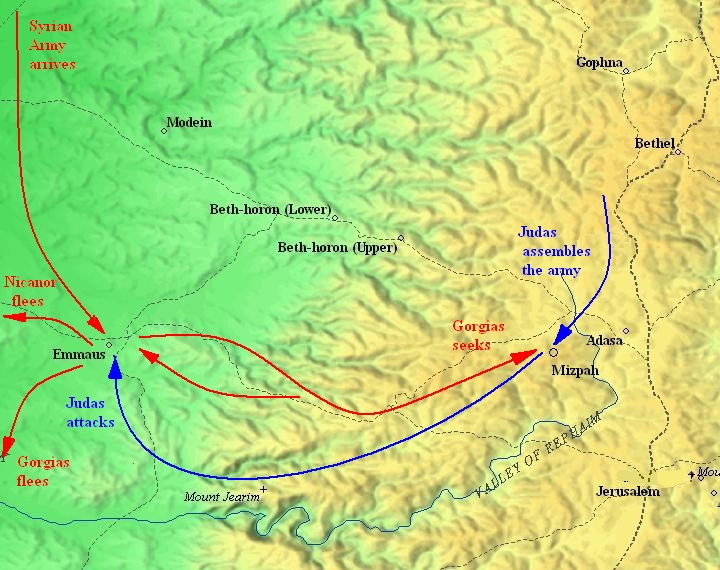
I thought I had nailed the reason for Luke’s choice of Emmaus (Luke 24:23-35) as the destination of the two disciples after the crucifixion when I posted on The Origin and Meaning of the Emmaus Road Narrative in Luke. That explanation hinged on Codex Bezae containing the original word, Oulammaus, and that led to the link with the place where God appeared to Jacob when he was traveling away from his home.
But now there is another possible explanation for the choice of the placename that I have come across in Classics and the Bible by John Taylor.
Firstly, he suggests the location in Luke 24:13 is “strongly probably” to be identified with the place of that name in 1 Maccabees 3:40 and Josephus in Jewish War 2.71. This places the town 160 stades distant from Jerusalem rather than the 60 in most manuscripts, though some manuscripts do say 160.
It is however much more likely that Luke intends a symbolic point than that he is preoccupied with the minutiae of geography of that there were two places of the same name.
Firstly look at the Emmaus passage to recollect a few details: Continue reading “Another reason for the walk to Emmaus: looking for the wrong kind of deliverance”
